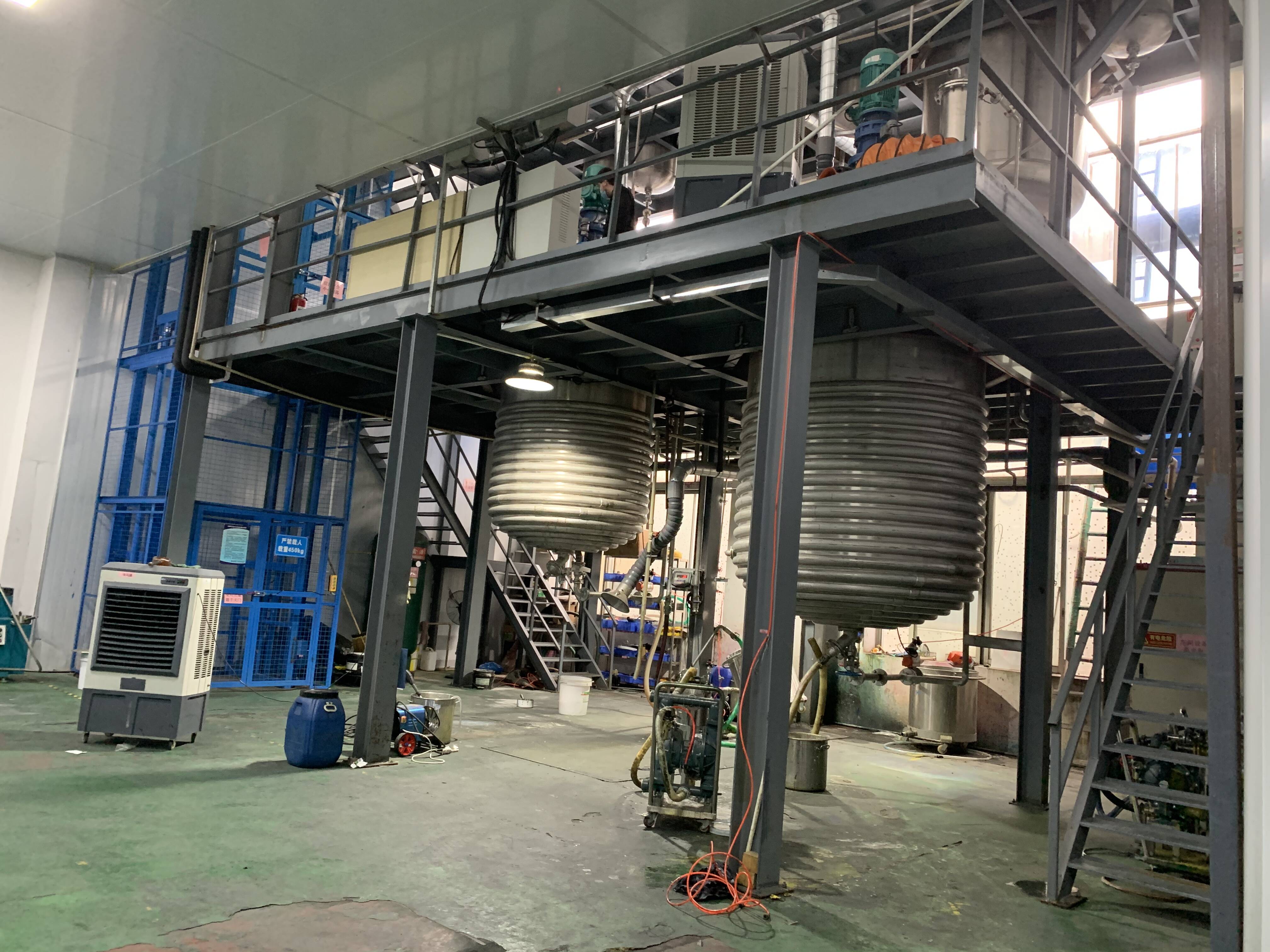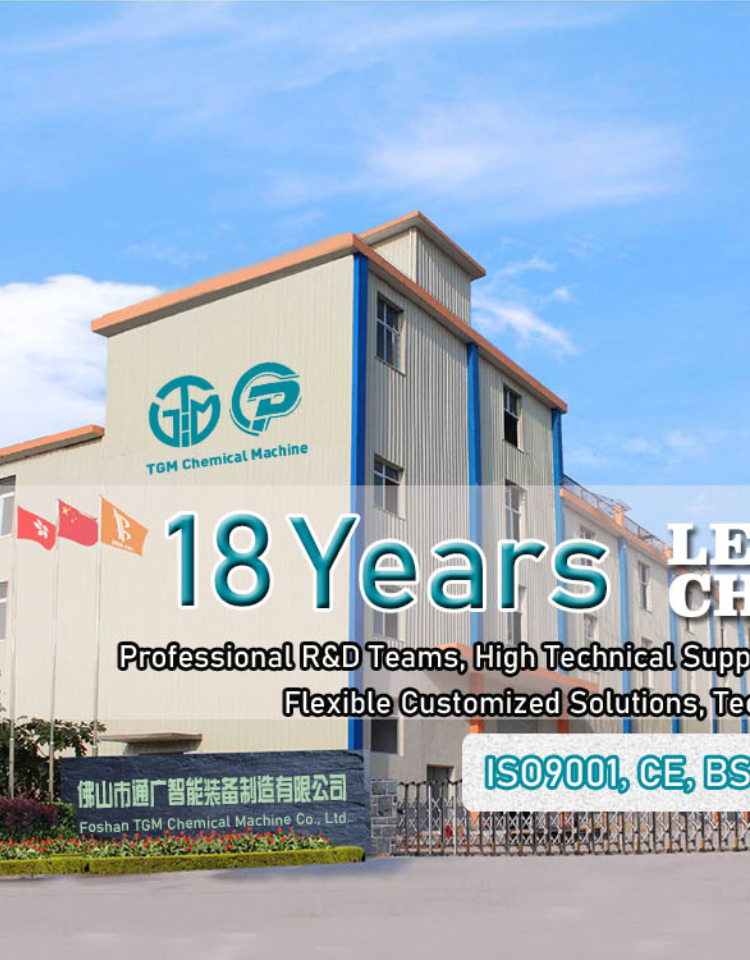Email cannot be empty
Password cannot be empty
Email format error
Email cannot be empty
Email already exists
6-20 characters(letters plus numbers only)
The password is inconsistent
Email format error
Email cannot be empty
Email does not exist
6-20 characters(letters plus numbers only)
The password is inconsistent


List of acrylic latex production equipment
Raw Material Storage and Metering System:
-
Monomer Storage Tank: Stores acrylate monomers (such as butyl acrylate, ethyl acrylate, methyl methacrylate, acrylic acid, etc.). Typically requires thermal insulation (to prevent polymerization) and nitrogen blanketing (to prevent oxidation).
-
Emulsifier/Surfactant Storage Tank: Stores anionic and nonionic emulsifiers.
-
Initiator Storage Tank: Stores water-soluble initiators (such as persulfates) or components of redox initiators. May require refrigeration.
-
Functional Monomer/Crosslinker Storage Tank: Stores acrylic acid, methacrylic acid, acrylamide, N-hydroxymethylacrylamide, etc.
-
pH Adjuster Storage Tank: Stores ammonia water, sodium hydroxide solution, etc.
-
Deionized Water Storage Tank: Provides water for polymerization.
-
Additive Storage Tank: Stores defoamers, chain transfer agents, etc.
-
Precision Metering Pump/Weighing System: Used for accurate metering and delivery of various raw materials to the reactor or pre-emulsion tank. This is crucial for ensuring formula accuracy and batch stability.
Pre-emulsification System:
- Pre-emulsion Tank: A container equipped with a powerful stirring device (usually a homogenizer or anchor/paddle stirrer). This tank pre-mixes and emulsifies monomers, emulsifiers, and part of the deionized water to form a stable monomer emulsion (pre-emulsion). This aids in more uniform dispersion and reaction of monomers in the polymerization reactor.
Polymerization Reaction System (Core):
-
Polymerization Reactor: The core equipment of the entire production line.
-
Material: Typically stainless steel (304 or 316L), with polished inner walls to reduce material adhesion.
-
Structure: Equipped with a jacket (for cooling water/steam temperature control) and/or internal coils. Features an accessible top head (for easy cleaning and maintenance).
-
-
Stirring System: Equipped with efficient stirrers (often multi-layer paddle, anchor type, turbine type, or a combination) to ensure complete mixing of reactants, uniform heat transfer, and to prevent local overheating or clumping.
-
Temperature Control System: Achieves precise heating, holding, and cooling control through circulating media (water/thermal oil) in the jacket/coils, along with temperature sensors and control valves. Temperature control is crucial as polymerization is a strongly exothermic reaction.
-
Addition System Interface: Connects pipelines and valves for the addition of pre-emulsion and initiator solution.
-
Reflux Condenser: Installed at the top of the reactor to condense evaporated monomers and vapors, returning them to the reactor to reduce loss and control reactor pressure.
-
Nitrogen Protection/Purge System: Introduces nitrogen before and during the reaction to displace oxygen (which is a polymerization inhibitor).
-
Sampling Port: Used for sampling and testing during the process.
-
Pressure/Vacuum System: May be required for operating under specific pressure or vacuum conditions.
Initiator Preparation and Addition System:
-
Initiator Preparation Tank: Used to dissolve solid initiators or prepare initiator solutions.
-
Initiator Metering and Addition Device: Precision metering pump and pipelines that slowly and evenly add the initiator solution to the polymerization reactor according to a set program.
Pre-emulsion Addition System:
-
Pre-emulsion Storage Tank/Buffer Tank: Stores the prepared pre-emulsion.
-
Pre-emulsion Metering and Addition Device: Precision metering pump and pipelines that slowly and evenly add the pre-emulsion to the polymerization reactor according to a set program (usually coordinated with the addition of initiators). The addition speed and temperature are crucial parameters controlling the reaction rate and product quality.
Cooling and Temperature Control System:
-
Cooling Water Circulation System/Chiller: Provides the cooling medium required for the jacket/coils. Large systems typically have chillers or cooling tower systems.
-
Temperature Control Instruments and Valves: PLC/DCS systems control the opening of cooling water and steam valves to achieve precise reactor temperature control.
Post-Processing and Adjustment System:
-
Curing/Holding Tank: After polymerization, it is sometimes necessary to hold at a certain temperature for a period (curing) to allow residual monomers to react completely.
-
Cooler: Cools the emulsion to a safe temperature (usually <50°C) before discharge.
-
Neutralization/pH Adjustment Tank: A container with stirring for adding ammonia water or other alkaline solutions to neutralize the acidity of the emulsion (mainly from carboxylic monomers such as acrylic acid), adjusting the pH to a stable range (typically 7-9).
-
Additives Addition Tank/Pipeline Addition: For the addition of defoamers, preservatives, thickeners, film-forming agents, and other post-additives.
-
Filtration Equipment: Bag filters or vibrating screens to filter out any gel or impurities produced during the reaction, ensuring the purity of the product. This is an important step for ensuring product quality.
Finished Product Storage System:
- Finished Product Tank: Stores the final blended acrylic emulsion product. Typically equipped with slow stirring (to prevent settling and layering) and thermal insulation (to prevent freezing).
Cleaning System (CIP):
- CIP System: Includes cleaning agent storage tanks, pumps, spray balls, etc., used for in-place cleaning of reactors, pre-emulsion tanks, pipelines, etc., to remove residual polymers, prevent cross-linking and blockage, ensuring cleanliness between batches and product quality. This is crucial for emulsion production.
Utility Systems:
-
Steam Boiler: Provides steam for heating.
-
Cooling Water System: Supplies cooling water.
-
Chiller: Provides low-temperature cooling medium (if required).
-
Compressed Air System: Supplies instrument air and pneumatic valve power.
-
Vacuum System: (If vacuum operations are needed).
-
Nitrogen System: Provides nitrogen protection.
-
Power Supply System: Supplies power to all motors, instruments, and control systems.
Exhaust Gas Treatment System:
-
Condenser: Further condenses and recovers unreacted monomers.
-
Absorption Tower/Activated Carbon Adsorption Device: Treats trace organic waste gases that cannot be condensed, meeting environmental protection requirements.
Control System:
- DCS/PLC Control System: Implements automated control of the entire production process, including monitoring, recording, alarming, and automatic adjustment of temperature, pressure, liquid level, flow (addition), stirring speed, valve switches, etc. This is crucial for ensuring production safety and consistency in product quality.

